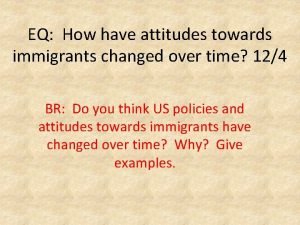How The Water Levels Have Changed Over Time







- Slides: 7

How The Water Levels Have Changed Over Time. The water levels in the Speed River usually change by rain or rain storms raining down into the river or onto the land eventually running into the Speed River. The Speed rivers rise of water levels are because of the high and major amounts of rain and snow, dangerous high levels of waves making floods in different parts of cities can lead to major damage.

3 reasons water levels change The Speed rivers rise of water levels are because of the high and major amounts of rain and snow. Dangerous high levels of waves making floods in different parts of cities can lead to major damage.

Native Species in the Speed River and Carolinian Forest. Some native species in the Speed River consist of The Great Egret King Rail, The Eastern Spring Softshell Turtle, The Eastern Fox Snake, The Hognose Snake, The Queen Snake, The Fowler's Toad, The Smallmouth Bass, The Largemouth Bass, The Rainbow Trout, The Brook Trout and The Northern Pike. All these Native species are all from the Speed river and if I had to guess where they came from it would the ocean or the great lakes.

Invasive Species in the Speed River. There are several invasive species that are impacting on our native species. Some invasive examples are: Asian Carp. There are 10 different types of Asian Carp and they come from China, Round Goby. The Round Goby originates from European seas Black Sea and Caspian Sea, Sea lamprey. The Sea Lamprey is a predator for other fish in the great lakes and comes from the Northern and Western Atlantic Ocean’s, Rusty Crayfish come from streams in the Ohio River Basin, Zebra Mussels come from Caspian Sea along with the Round Goby, Purple Loosestrife, Giant Hogweed, Buckthorn and

Photos Of The Speed River. A Satellite Image of The Speed River In The Summer. In The Winter.

How did you interpret the data you collected? We had a water expert come in and help us from the University of Guelph that has been studying water for more than 60 years at the university of Guelph. Websites: Grand River Conservation Authority and Google Images.

This is the conclusion of our waterlution presentation!












